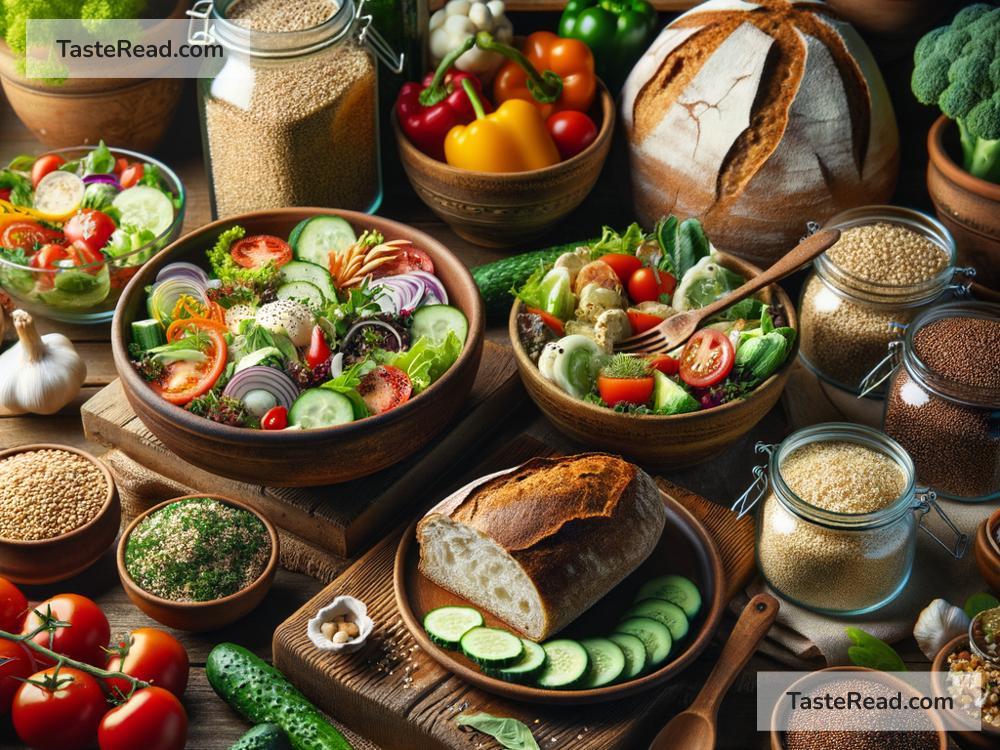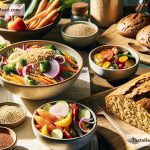How to Incorporate Low-Water-Crop Grains in Zero-Waste Recipes
In today’s world, where the environment is a significant concern, every little step towards sustainability counts. One such step is incorporating low-water-crop grains into our diets. These grains require less water to grow, making them an eco-friendly choice. When combined with a zero-waste approach to cooking, they can significantly reduce our ecological footprint. Here’s how to make the most of these grains in your kitchen, contributing to a greener planet.
Understanding Low-Water-Crop Grains
Before diving into recipes, let’s get to know what low-water-crop grains are. These grains, as the name suggests, need less water compared to traditional crops like rice. Some popular examples include millet, quinoa, barley, and sorghum. Not only are they kind to the planet, but they are also nutritious, offering a variety of vitamins, minerals, and fibers.
The Zero-Waste Kitchen Approach
The zero-waste kitchen philosophy is all about reducing food waste to the bare minimum. This means using every bit of food, planning meals meticulously, and being creative with leftovers. When we combine this approach with low-water-crop grains, we get a powerful method to sustain both our health and the environment.
Incorporating Low-Water-Crop Grains into Your Meals
1. Start with Breakfast
Breakfast is a great place to start experimenting. Quinoa, for example, can be a fantastic ingredient for a morning bowl. Cook the quinoa as per instructions, and instead of discarding the water, use it to water your plants. For the bowl, mix in your favorite fruits, a handful of nuts, and a dollop of yogurt. It’s nutritious, delicious, and produces zero waste.
2. Creative Lunches and Dinners
Salads, soups, and stews are perfect for lunch or dinner and offer a canvas for creativity with low-water-crop grains. Cook a batch of millet or barley, and use portions throughout the week in different recipes, reducing the need for constant cooking and water usage. For salads, mix these grains with your choice of greens, roasted veggies, and a protein source for a fulfilling meal. In soups and stews, they act as thickening agents and add a lovely texture. Remember to save and freeze vegetable peels and ends to use as stock for these dishes, ensuring no waste.
3. Snacks and Sides
Don’t overlook the potential of these grains as snacks or side dishes. Popped sorghum is a fantastic low-calorie snack, very similar to popcorn, and can be made in a pot without needing any special appliances. For a side, try a barley risotto, using mushroom stems and cheese rinds for flavor, ensuring every bit of your ingredients is utilized.
Tips for a Zero-Waste Grain Kitchen
- Buy in Bulk: Invest in grains from bulk bins to reduce packaging waste. Bring your own bags or containers to store them in.
- Storage is Key: Store grains properly to extend their shelf life. Use glass or stainless steel containers instead of plastic.
- Scraps for Stock: Collect scraps from vegetables and leftover bits from grain preparation to make a delicious stock. Freeze it for future use in recipes.
- Meal Planning: Plan your meals to make the most of your ingredients. This helps in minimizing waste and in being creative with leftovers.
- Composting: For the unavoidable waste like peels or husks, composting is a fantastic way to recycle these into useful soil nutrients.
The Bigger Picture
Incorporating low-water-crop grains in your zero-waste recipes is more than just a culinary experiment; it’s a commitment to a healthier planet and lifestyle. Through conscious choices in the kitchen, we can make a considerable impact on our water usage and waste production. These grains prove that sustainable eating can be flavorful, nutritious, and responsible.
Wrap-Up
Embracing low-water-crop grains in a zero-waste kitchen might seem like a small step, but it’s one that can lead to significant positive changes for the environment. It’s about being mindful of our resource use, minimizing waste, and enjoying the tasty, nutritious benefits these grains offer. Start incorporating these eco-friendly grains into your meals and contribute to a greener, more sustainable world. Remember, every grain counts.


